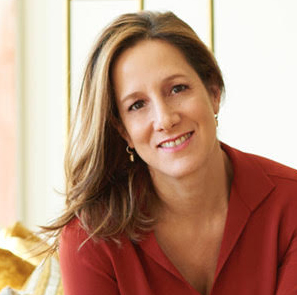
Mike Wallace, the legendary 60 Minutes correspondent, kept to a Tu BiShvat diet.
When I was one of his broadcast producers years ago, Wallace prided himself on his intake of nuts and raisins, insisting they were the secret to his longevity and jet-black hair.
Mike, rest his soul, would never have called his regimen “The Tu BiShvat Diet,” because he couldn’t have told you what Tu BiShvat was (he was a proud Jew without ritual), but he was on to something. Because he lived to 93 and never went gray.
Tu BiShvat was dubbed by the rabbis of the Talmud as a Rosh HaShanah (a new year) for the trees, because it began the tithing cycle, in which a farmer had to tithe his crops either to the poor or to Jerusalem, depending on the year. It was reimagined by the medieval kabbalists as a celebration of creation and the bounty of the earth, with a “seder” consisting of nuts and fruit eaten in a certain order.
These days, we’re supposed to plant trees on Tu BiShvat. Or plant plants. Or give money to enable others to plant plants.
This holiday was the ancient precursor to Earth Day. It should make us alert to the preciousness of air, water, animals, and foliage, as well as all that we’re doing to destroy them.
Rabbi Arthur Waskow, founder of the Shalom Center in Philadelphia, calls out those people who say either, “It doesn’t apply to me,” or “I’m too overwhelmed to act.” I fall in the latter camp.
He suggests I take a small first step by planting parsley to use for my Passover seder two months later. He’s right. The parsley could be a nice link between the two seders. I can get in touch with the earth for one seder by planting herbs for the next.
I buy a packet of seeds, a flowerpot, and some soil. I spread newspaper on my kitchen table, cut open the peat, and scoop the earth into the clay pot with a soup ladle. Then I embed the seeds in the soil according to the packet instructions. When I pour a little water on my planting, it feels holy.
I now turn to the nuts, because they are prescribed for any Tu BiShvat seder, along with the seven species associated, in Deuteronomy, with the land of Israel: wheat, barley, grapes, figs, pomegranates, olives, and dates.
The Tu BiShvat seder was invented by 17th-century kabbalists in the Israeli village of Safed to honor nature, the Tree of Life, and the four worlds or levels of creation. I had no idea there were four worlds, but as I read about each one, I try to personalize it. That’s the only way I can connect to this mystical stuff at all.
The World of Action
I think about what I do – or don’t do – for my family, community, strangers, and for the future. When do I act, when am I inert? For the world of action, the mystics tell us to eat fruits with hard shells and soft insides, such as walnuts and coconuts.
The World of Emotion
Okay, I can get emotional. But I’m impatient with those who exhibit too much emotion. At the same time, I’m wary of people who seem detached. For the world of emotion, we eat fruits with soft shells and hard insides, such as dates and plums.
The World of Intellect
I respect intellectual mastery and covet it, too. I’m grateful to the people who spend most of their time thinking about the planet we’re going to leave to our children and grandchildren; they’re doing the heavy lifting for the rest of us. For the world of intellect, we eat fruits that are wholly edible such as grapes or blueberries.
The World of the Spirit
This has always been a mushy area for me. But when I do feel transcendence, it’s often in nature. I can easily name the moments when I’ve felt God, and they often involve streams, peaks, deserts, glaciers, forests, oceans, or cliffs. It’s harder to list the steps I’ve taken to safeguard those scenes. The world of the spirit is not represented by any fruit.
I’ll have to remember to water my parsley plant. I’ve failed at every vegetable I’ve ever tried to grow before, but this time I’m on a mission to produce greens for the seder plate, a small stab at ecology.
This article is adapted and reprinted from My Jewish Year: 18 Holidays, One Wondering Jew, with permission from Fig Tree Books LLC. The book will be published on March 14, 2017 and is available for pre-order.

